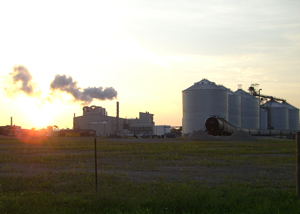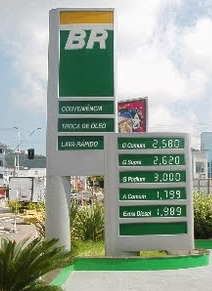Waste from chickens and turkeys could soon become a power source in North Carolina.
 Fibrowatt LLC, which opened the nation’s first poultry-litter fueled power plant two years ago in Minnesota, has contracted with Fagen, Inc. for the engineering, procurement, and construction (EPC) of its first biomass-fueled power project in North Carolina.
Fibrowatt LLC, which opened the nation’s first poultry-litter fueled power plant two years ago in Minnesota, has contracted with Fagen, Inc. for the engineering, procurement, and construction (EPC) of its first biomass-fueled power project in North Carolina.
 “We are delighted to work with the Fagen team,” said Fibrowatt CEO Rupert Fraser, “their experience as EPC contractors is very impressive and we are certain that we are moving forward with a contractor that understands the unique characteristics of our technology. This agreement is another step for us in North Carolina – helping the State move forward towards its goal of being a leader in the implementation of home-grown renewable energy.”
“We are delighted to work with the Fagen team,” said Fibrowatt CEO Rupert Fraser, “their experience as EPC contractors is very impressive and we are certain that we are moving forward with a contractor that understands the unique characteristics of our technology. This agreement is another step for us in North Carolina – helping the State move forward towards its goal of being a leader in the implementation of home-grown renewable energy.”
Fagen, Inc. is a leading national design-builder focused on renewable energy projects, and is headquartered in Granite Falls, MN. “We believe the Fibrowatt process for energy production is a large step in the right direction towards energy independence and we look forward to being part of their projects,” said CEO & President Ron Fagen.
The initial North Carolina project will produce 55 megawatts of renewable electricity, enough power annually to supply over 40,000 homes. In addition to poultry litter, the plant will have the design flexibility to blend wood and other biomass with poultry litter, thus reducing dependency on a single fuel type. Plans for two other plants are also in the works.


 “Profitability has returned,” says Joe Victor, who is Vice President of commodity research advisory firm
“Profitability has returned,” says Joe Victor, who is Vice President of commodity research advisory firm  “Growth Energy supports a Low Carbon Fuel Standard as long as it is done right, and the Low Carbon Fuel Standard proposed by the California Air Resources Board is not done right,” said Growth Energy CEO Tom Buis. “It relies on a flawed, unproven and unscientific concept that would punish biofuels, despite the opportunity biofuels like ethanol provide as cleaner, greener fuels that are an alternative to dirty foreign oil.”
“Growth Energy supports a Low Carbon Fuel Standard as long as it is done right, and the Low Carbon Fuel Standard proposed by the California Air Resources Board is not done right,” said Growth Energy CEO Tom Buis. “It relies on a flawed, unproven and unscientific concept that would punish biofuels, despite the opportunity biofuels like ethanol provide as cleaner, greener fuels that are an alternative to dirty foreign oil.” Greensburg, Kansas, literally destroyed by a tornado in May, 2007, is getting some help from the government to have a green energy source supply the power for the town as it continues to rebuild.
Greensburg, Kansas, literally destroyed by a tornado in May, 2007, is getting some help from the government to have a green energy source supply the power for the town as it continues to rebuild. Leading researchers and companies looking to turn algae into biofuels will meet in Hawaii next month to talk about progress and challenges with the green-slime-into-green-fuel process.
Leading researchers and companies looking to turn algae into biofuels will meet in Hawaii next month to talk about progress and challenges with the green-slime-into-green-fuel process. Corn Plus was one of five Minnesota businesses recognized by
Corn Plus was one of five Minnesota businesses recognized by  “Conducting the trials locally gives local farmers a chance to see DDGS and CGF use firsthand in a trial that utilizes their own climatic conditions. It provides them a reliable source of data they can be more confident in,” said Lori Feltis, USGC Rest of the World Advisory Team member, who is currently in Egypt to assess the use of U.S. DDGS and CGF.
“Conducting the trials locally gives local farmers a chance to see DDGS and CGF use firsthand in a trial that utilizes their own climatic conditions. It provides them a reliable source of data they can be more confident in,” said Lori Feltis, USGC Rest of the World Advisory Team member, who is currently in Egypt to assess the use of U.S. DDGS and CGF. According to the
According to the  Grant applications submitted must be for projects that will be completed withing two years of grant award. Examples of past projects that have been supported by the ACRE grant program include wind turbines, solar panels, micro-hydro systems, biomass systems, and biodiesel plants. Funds will be distributed in three categories.
Grant applications submitted must be for projects that will be completed withing two years of grant award. Examples of past projects that have been supported by the ACRE grant program include wind turbines, solar panels, micro-hydro systems, biomass systems, and biodiesel plants. Funds will be distributed in three categories. The “
The “